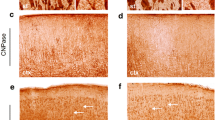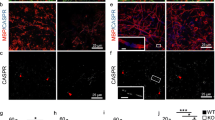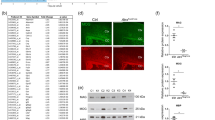Abstract
Phenylketonuria (PKU) is a metabolic genetic disease characterized by deficient phenylalanine hydroxylase (PAH) enzymatic activity. Brain hypomyelination has been reported in untreated patients, but its mechanism remains unclear. We therefore investigated the influence of phenylalanine (Phe), phenylpyruvate (PP), and phenylacetate (PA) on oligodendrocytes. We fisrt showed in a mouse model of PKU that the number of oligodendrocytes is not different in corpus callosum sections from adult mutants or from control brains. Then, using enriched oligodendroglial cultures, we detected no cytotoxic effect of high concentrations of Phe, PP, or PA. Finally, we analyzed the impact of Phe, PP, and PA on the myelination process in myelinating cocultures using both an in vitro index of myelination, based on activation of the myelin basic protein (MBP) promoter, and the direct quantification of myelin sheaths by both optical measurement and a bioinformatics method. None of these parameters was affected by the increased levels of Phe or its derivatives. Taken together, our data demonstrate that high levels of Phe, such as in PKU, are unlikely to directly induce brain hypomyelination, suggesting involvement of alternative mechanisms in this myelination defect.





Similar content being viewed by others
Abbreviations
- PKU:
-
Phenylketonuria
- PAH:
-
Phenylalanine hydroxylase
- Phe:
-
Phenylalanine
- Tyr:
-
Tyrosine
- PP:
-
Phenylpyruvate
- PA:
-
Phenylacetate
- LNAA:
-
Large neutral amino acids
- OPC:
-
Oligodendrocyte progenitor cells
- SVZ:
-
Subventricular zone
References
Ahring K, Belanger-Quintana A, Dokoupil K et al (2009) Dietary management practices in phenylketonuria across European centres. Clin Nutr 28(3):231–236
Barbin G, Aigrot MS, Charles P et al (2004) Axonal cell-adhesion molecule L1 in CNS myelination. Neuron Glia Biol 1(1):65–72
Baumann N, Pham-Dinh D (2001) Biology of oligodendrocyte and myelin in the mammalian central nervous system. Physiol Rev 81(2):871–927
Bottenstein J, Hayashi I, Hutchings S et al (1979) The growth of cells in serum-free hormone-supplemented media. Methods Enzymol 58:94–109
Cabib S, Pascucci T, Ventura R, Romano V, Puglisi-Allegra S (2003) The behavioral profile of severe mental retardation in a genetic mouse model of phenylketonuria. Behav Genet 33(3):301–310
Charles P, Hernandez MP, Stankoff B et al (2000) Negative regulation of central nervous system myelination by polysialylated-neural cell adhesion molecule. Proc Natl Acad Sci U S A 97(13):7585–7590
Demerens C, Stankoff B, Zalc B, Lubetzki C (1999) Eliprodil stimulates CNS myelination: new prospects for multiple sclerosis? Neurology 52(2):346–350
Dyer CA (2000) Comments on the neuropathology of phenylketonuria. Eur J Pediatr 159(Suppl 2):S107–S108
Dyer CA, Kendler A, Philibotte T, Gardiner P, Cruz J, Levy HL (1996) Evidence for central nervous system glial cell plasticity in phenylketonuria. J Neuropathol Exp Neurol 55(7):795–814
Gow A, Friedrich VL Jr, Lazzarini RA (1992) Myelin basic protein gene contains separate enhancers for oligodendrocyte and Schwann cell expression. J Cell Biol 119(3):605–616
Hoeksma M, Reijngoud DJ, Pruim J, de Valk HW, Paans AM, van Spronsen FJ (2009) Phenylketonuria: high plasma phenylalanine decreases cerebral protein synthesis. Mol Genet Metab 96(4):177–182
Horster F, Schwab MA, Sauer SW et al (2006) Phenylalanine reduces synaptic density in mixed cortical cultures from mice. Pediatr Res 59(4 Pt 1):544–548
Hughes JV, Johnson TC (1976) The effects of phenylalanine on amino acid metabolism and protein synthesis in brain cells in vitro. J Neurochem 26(6):1105–1113
Huttenlocher PR (2000) The neuropathology of phenylketonuria: human and animal studies. Eur J Pediatr 159(Suppl 2):S102–S106
Joseph B, Dyer CA (2003) Relationship between myelin production and dopamine synthesis in the PKU mouse brain. J Neurochem 86(3):615–626
Kaufman S (1989) An evaluation of the possible neurotoxicity of metabolites of phenylalanine. J Pediatr 114(5):895–900
Matalon R, Michals-Matalon K, Bhatia G et al (2007) Double blind placebo control trial of large neutral amino acids in treatment of PKU: effect on blood phenylalanine. J Inherit Metab Dis 30(2):153–158
McCarthy KD, de Vellis J (1980) Preparation of separate astroglial and oligodendroglial cell cultures from rat cerebral tissue. J Cell Biol 85(3):890–902
McDonald JD, Charlton CK (1997) Characterization of mutations at the mouse phenylalanine hydroxylase locus. Genomics 39(3):402–405
Miller RH (2002) Regulation of oligodendrocyte development in the vertebrate CNS. Prog Neurobiol 67(6):451–467
Pardridge WM (1998) Blood-brain barrier carrier-mediated transport and brain metabolism of amino acids. Neurochem Res 23(5):635–644
Pascucci T, Ventura R, Puglisi-Allegra S, Cabib S (2002) Deficits in brain serotonin synthesis in a genetic mouse model of phenylketonuria. NeuroReport 13(18):2561–2564
Pey AL, Desviat LR, Gamez A, Ugarte M, Perez B (2003) Phenylketonuria: genotype-phenotype correlations based on expression analysis of structural and functional mutations in PAH. Hum Mutat 21(4):370–378
Rocha JC, Martel F (2009) Large neutral amino acids supplementation in phenylketonuric patients. J Inherit Metab Dis 32(4):472–480
Sarkissian CN, Boulais DM, McDonald JD, Scriver CR (2000a) A heteroallelic mutant mouse model: a new orthologue for human hyperphenylalaninemia. Mol Genet Metab 69(3):188–194
Sarkissian CN, Scriver CR, Mamer OA (2000b) Measurement of phenyllactate, phenylacetate, and phenylpyruvate by negative ion chemical ionization-gas chromatography/mass spectrometry in brain of mouse genetic models of phenylketonuria and non-phenylketonuria hyperphenylalaninemia. Anal Biochem 280(2):242–249
Schindeler S, Ghosh-Jerath S, Thompson S et al (2007) The effects of large neutral amino acid supplements in PKU: an MRS and neuropsychological study. Mol Genet Metab 91(1):48–54
Scriver CR, Kaufman S (2001) Hyperphenylalaninemia: phenylalanine hydroxylase deficiency. In: Scriver CR, Beaudet AL, Sly WS, Valle D, (eds); Childs B, Kinzler KW, Vogelstein B (associated eds) The metabolic and molecular bases of inherited disease, 8th edn. McGraw-Hill, New York, pp 1667–1724
Shefer S, Tint GS, Jean-Guillaume D et al (2000) Is there a relationship between 3-hydroxy-3-methylglutaryl coenzyme a reductase activity and forebrain pathology in the PKU mouse? J Neurosci Res 61(5):549–563
Silberberg DH (1967) Phenylketonuria metabolites in cerebellum culture morphology. Arch Neurol 17(5):524–529
Smith CB, Kang J (2000) Cerebral protein synthesis in a genetic mouse model of phenylketonuria. Proc Natl Acad Sci U S A 97(20):11014–11019
Sommer I, Schachner M (1981) Monoclonal antibodies (O1 to O4) to oligodendrocyte cell surfaces: an immunocytological study in the central nervous system. Dev Biol 83(2):311–327
Stankoff B, Aigrot MS, Noel F, Wattilliaux A, Zalc B, Lubetzki C (2002) Ciliary neurotrophic factor (CNTF) enhances myelin formation: a novel role for CNTF and CNTF-related molecules. J Neurosci 22(21):9221–9227
Surtees R, Blau N (2000) The neurochemistry of phenylketonuria. Eur J Pediatr 159(Suppl 2):S109–S113
van Spronsen FJ, Hoeksma M, Reijngoud DJ (2009) Brain dysfunction in phenylketonuria: is phenylalanine toxicity the only possible cause? J Inherit Metab Dis 32(1):46–51
Williams RA, Mamotte CD, Burnett JR (2008) Phenylketonuria: an inborn error of phenylalanine metabolism. Clin Biochem Rev 29(1):31–41
Wu C, Schulte J, Sepp KJ, Littleton JT, Hong P (Submitted) Robust Neurite Detection and Automatic Morphological Analysis of Optical Microscopy Neuron Cell Culture Images in High-Content Screening. Neuroinformatics
Yamamura T, Konola JT, Wekerle H, Lees MB (1991) Monoclonal antibodies against myelin proteolipid protein: identification and characterization of two major determinants. J Neurochem 57(5):1671–1680
Zagreda L, Goodman J, Druin DP, McDonald D, Diamond A (1999) Cognitive deficits in a genetic mouse model of the most common biochemical cause of human mental retardation. J Neurosci 19(14):6175–6182
Acknowledgments
The authors thank the Imaging Platform, the SPF Animal Facility, and the Neurosciences Department from GIGA-Research for their experimental help. We also thank Olympus Belgium N.V. for providing the Cell^R system.
Competing interest
None declared.
Author information
Authors and Affiliations
Corresponding author
Additional information
Communicated by: Bruce A. Barshop
Rights and permissions
About this article
Cite this article
Schoemans, R., Aigrot, MS., Wu, C. et al. Oligodendrocyte development and myelinogenesis are not impaired by high concentrations of phenylalanine or its metabolites. J Inherit Metab Dis 33, 113–120 (2010). https://doi.org/10.1007/s10545-010-9052-3
Received:
Revised:
Accepted:
Published:
Issue Date:
DOI: https://doi.org/10.1007/s10545-010-9052-3




